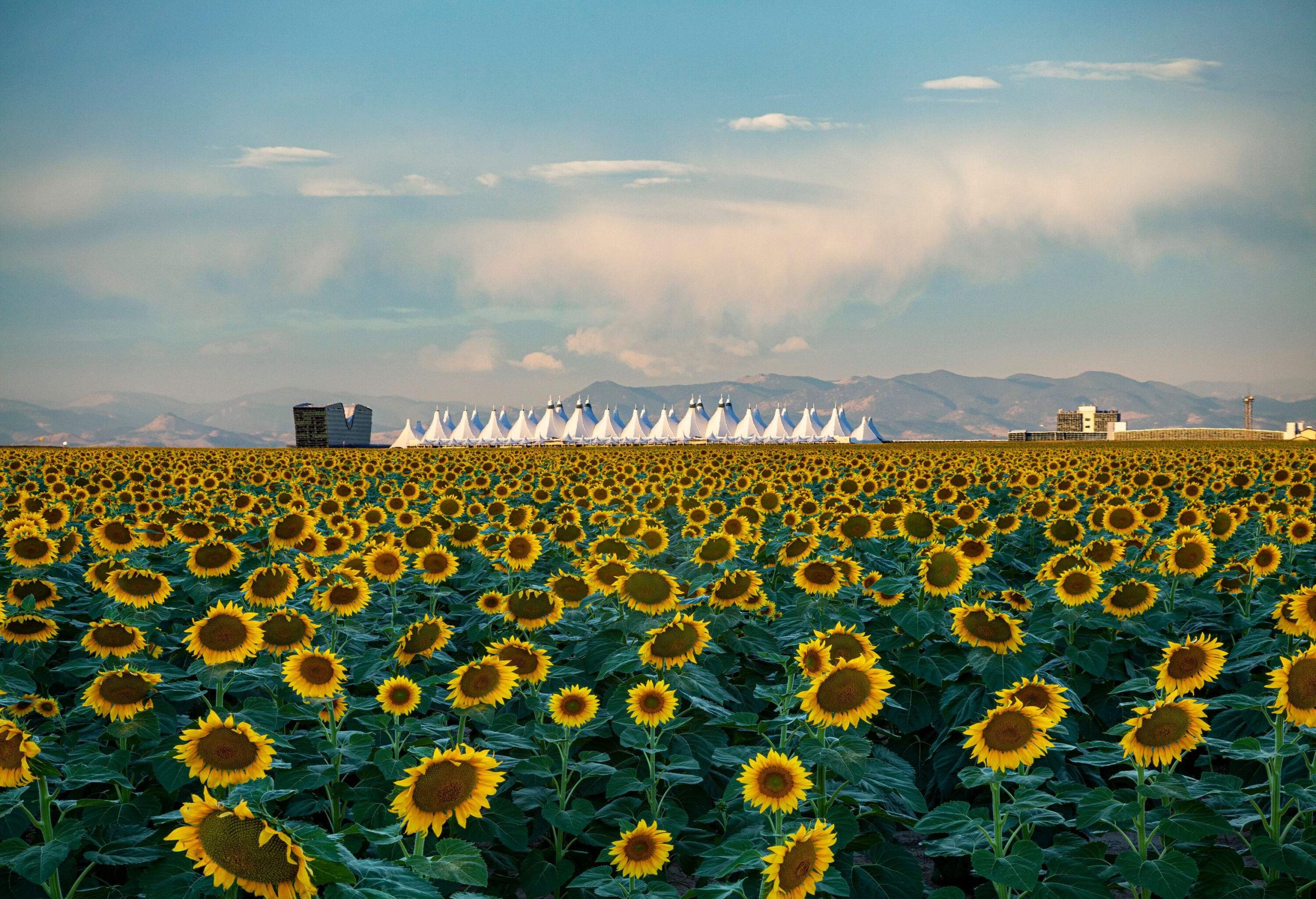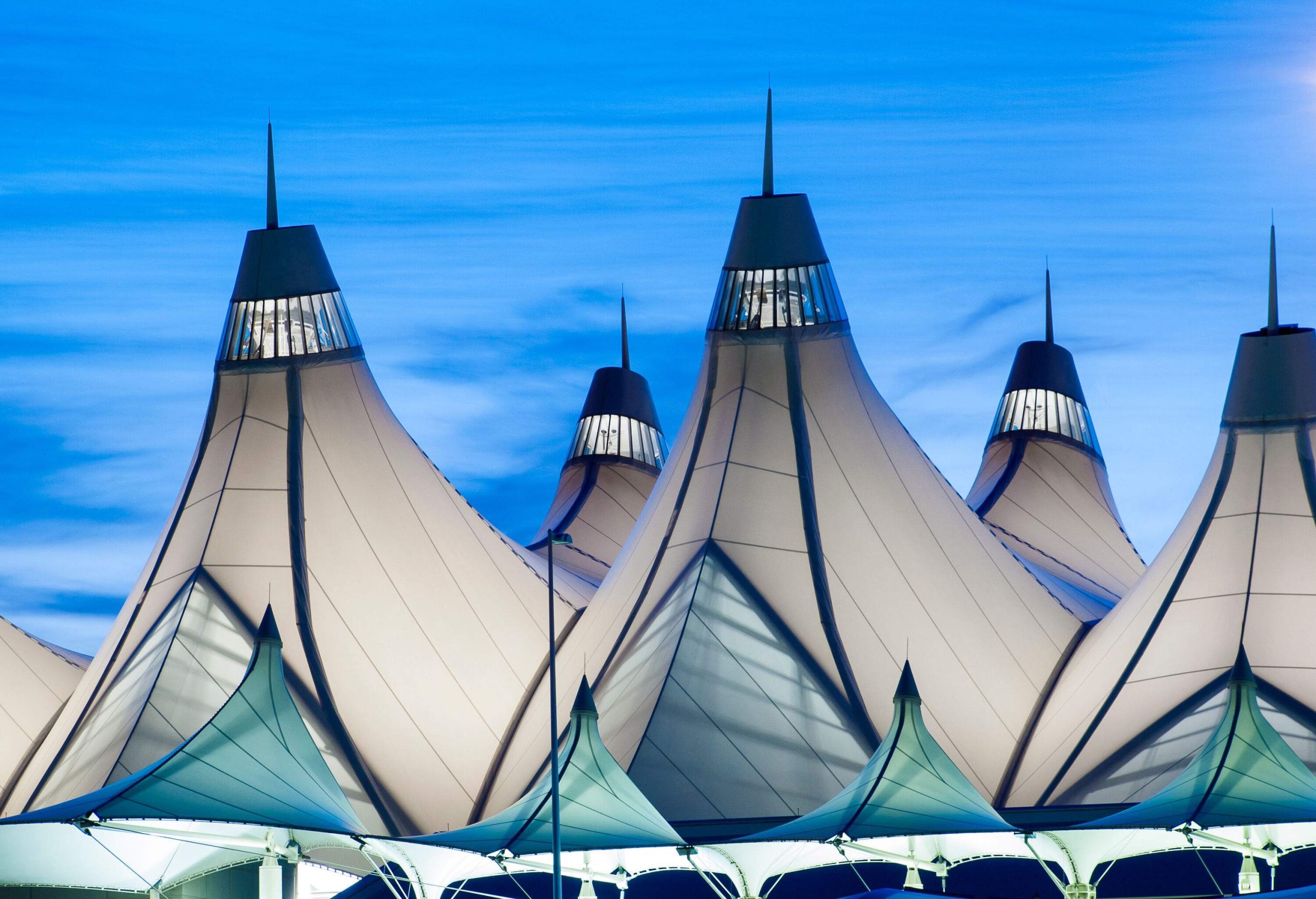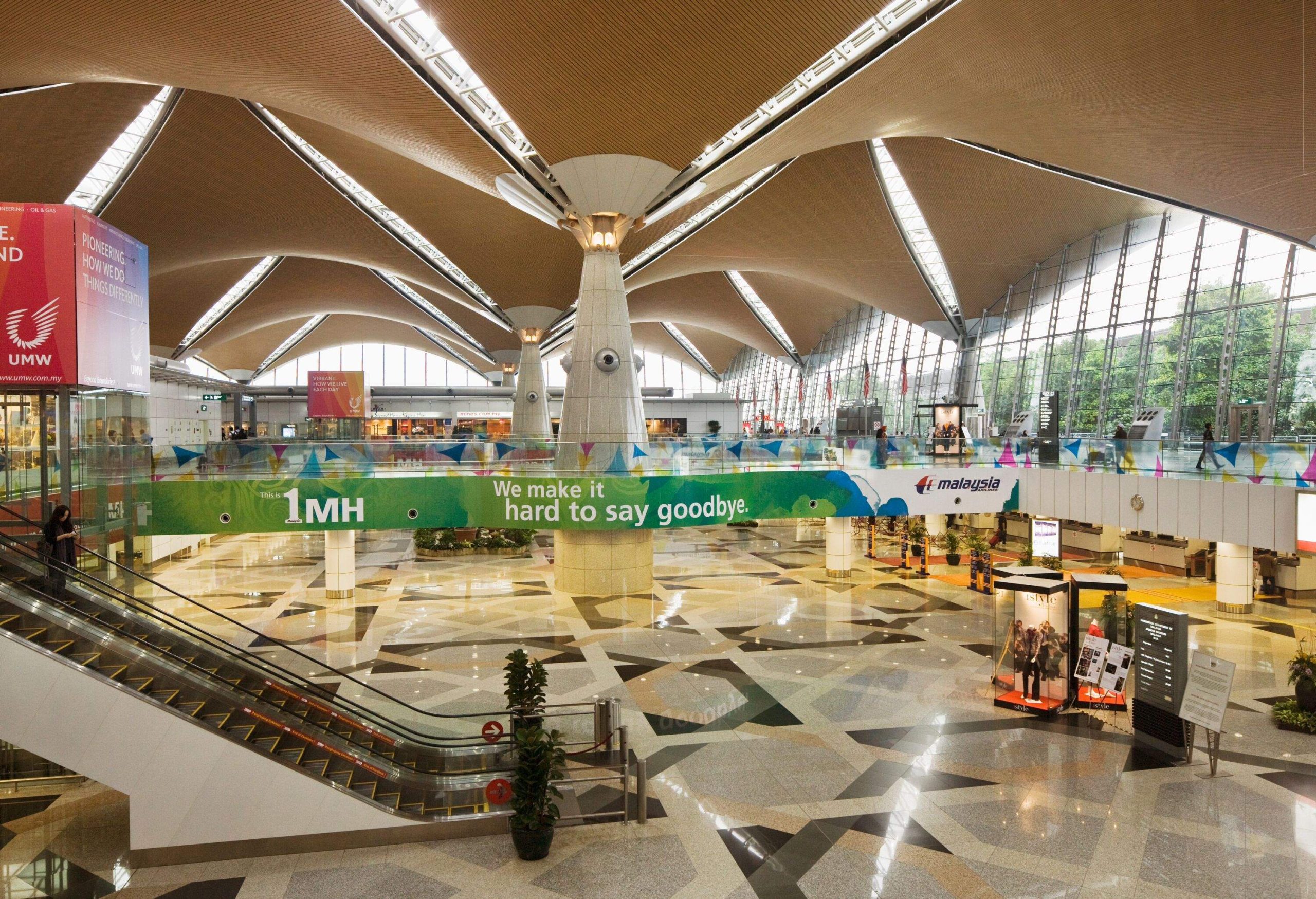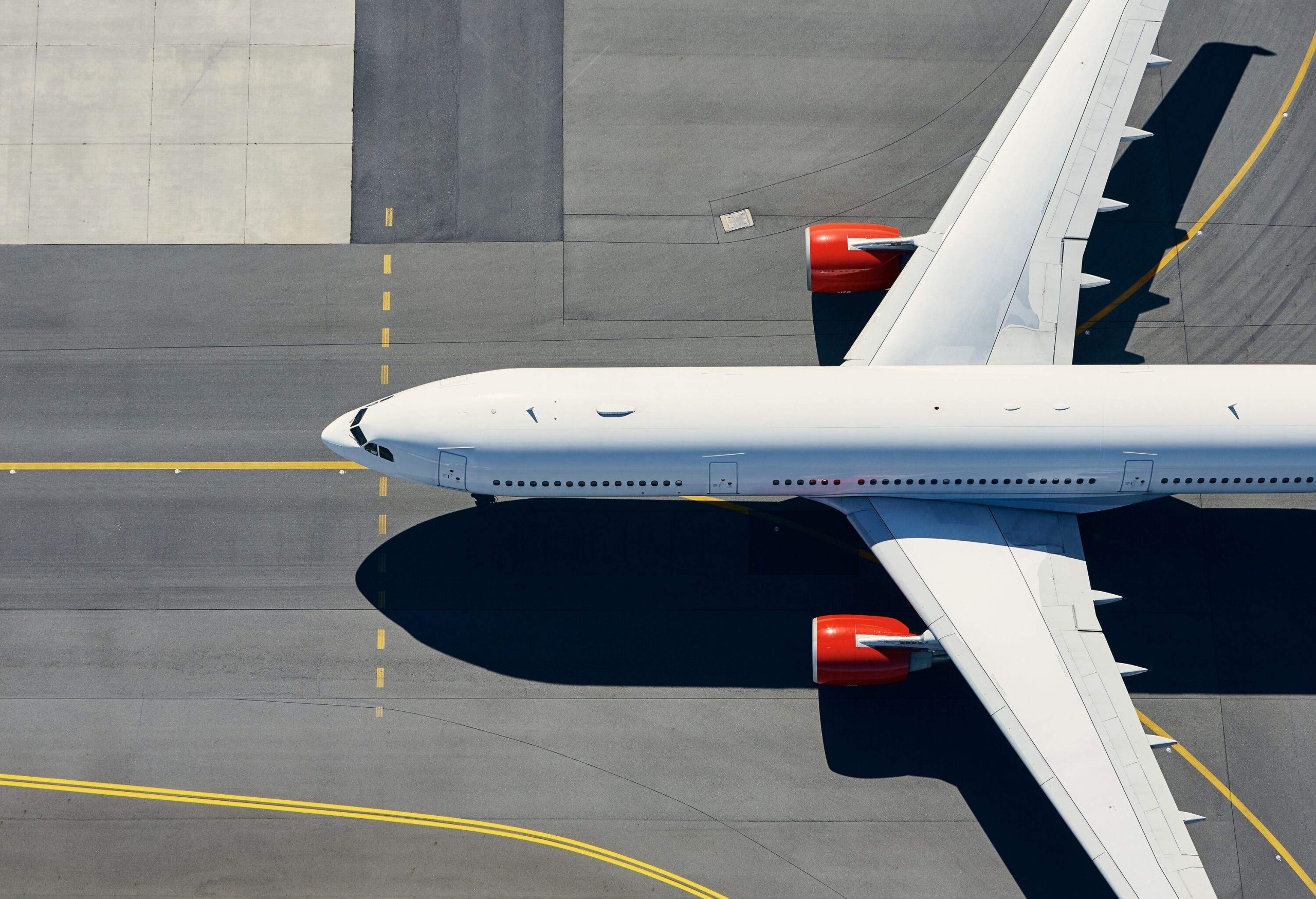Navigating the largest airports in the world, like DFW, can be a challenge, especially during tight layovers. While rushing between terminals, you may feel frazzled, yet the vast spaces can also be a blessing. Long layovers provide an opportunity to indulge in activities, offering a silver lining to the expansive scale of these major hubs.
Ranking the largest airports in the world
The top largest airports mentioned in this guide have been selected according to size alone. This ranking does not include passenger volume and flight frequency. As you will see, the largest airports aren’t always the busiest.
1. King Fahd International (DMM) – 300 square miles

According to the Guinness World Records, the King Fahd International Airport (DMM) in Saudi Arabia is the world’s largest airport in terms of land area. Spanning an incredible 300 square miles, it is larger than the entire land of its neighboring country Bahrain. The airport owes its enormous size to its previous life as an American military base.
Despite its massive footprint, it only ranks as the third busiest airport in Saudi Arabia with just 10 million passengers a year flying through it. The airport is about 20 miles northwest of downtown Dammam. The main airlines include Saudia (Saudi Arabian Airlines), Emirates, and Qatar Airways.
In addition to two standard terminals – one for international flights and one for domestic flights – DMM has a third terminal specifically for the royal family, VIPs, and government officials. The Royal Terminal alone is 177,000 square feet. There is also an onsite mosque with the capacity to accommodate up to 2,000 worshippers simultaneously, a residential community that houses more than 3,000 people, and an airport greenhouse that grows the plants used for onsite landscaping.
2. Denver International Airport (DEN) – 53 square miles
While Atlanta takes the prize for busiest American airport, the Denver International Airport wins the award for largest airport in the states. While Denver residents were originally somewhat irked when the new airport was constructed 25 miles away from downtown in the mid-1990s, this location offered ample land for future expansion. If you plan to explore Denver and do not want to rent a car, your best bet is to take the light rail downtown. Taking a taxi or rideshare all the way into downtown Denver can be expensive.
The Denver airport sits on 53 square miles of land and is known for its distinctive white tent-like roof structure that resembles the snow-capped Rocky Mountains to its west. Its official airport code is DEN, but Coloradoans lovingly refer to it as DIA. The airport consists of three interconnected concourses – A, B, and C that are connected via an airport train system.
Because the area is prone to winter weather, thick fog, heavy winds, and flight delays are not uncommon. Not to worry, DIA has everything you need to keep you busy during a long layover. Among an impressive dining lineup, don’t miss out on sampling local flavors at restaurants like the Boulder Beer Tap House, Rocky Mountain Chocolate Factory, Breckenridge Brewery, and the Denver Chop House. In addition to all the major airline lounges, DIA also has a spa in Concourse B to help you relax preflight.
Denver airport is notorious for long security lines. If your flight is leaving from Concourse A take the little-used A-Bridge security checkpoint for a quick route to Concourse A.
3. Kuala Lumpur International Airport (KUL) – 39 square miles
Kuala Lumpur International Airport (KUL) is Malaysia’s primary international airport and one of the largest airports in the world. It is located 28 miles south of the capital and its namesake Kuala Lumpur. Almost 3,00 flights a week fly in and out of the five-story airport. Though Kuala Lumpur may not match the daily flight volume of Dallas-Fort Worth (DFW), which sees nearly 1,800 flights, it shines in sheer size. Sitting on a piece of former agricultural land and encompassing 39 square miles, the Malaysian airport is about 1.5 times the size of DFW.
The Kuala Lumpur airport has two terminals known as KLIA1 and KLIA2. Each standalone terminal acts as its own fully functioning airport. The entrance to the two terminals are seven miles apart but are connected by a three-minute rail line known as the KLIA Aerotrain. The country’s national carrier, Malaysia Airlines operates out of Terminal One along with international carriers such as Singapore Airlines, Japan Airlines, KLM, British Airways, and more. Low-cost carriers such as AirAsia and AirAsia X operate out of Terminal 2.
4. Istanbul Airport (IST) – 30 square miles

Sitting on 30 square miles, the newly built Istanbul Airport is eight times as big as Seattle’s airport. Officially unveiled in 2019 to much anticipation, Istanbul’s airport is now the fourth largest airport in the world. It serves an average of 200 million passengers a year and has plenty of room to expand. The airport consists of one huge terminal building that is divided into five concourses. Concourse A, B, D, and F are for international flights while G and part of F are for domestic flights.
If you are hungry the airport offers “Burger King” for fast-food lovers, “Tadında Anadolu” for those seeking a taste of traditional Turkish specialties, or “Selamlique, for local delicacies.
Awaiting travelers can indulge in retail therapy in an extensive shopping zone. Spanning nearly 600,000 square feet, this zone feels like a bustling mall. On-site hotel “YOTEL” offers modern lodgings for tired travelers as well as lounges with spa services, business-centric zones equipped with reliable high-speed Wi-Fi, and meeting spaces.
5. Dallas/Fort Wort International Airport (DFW) – 27 square miles
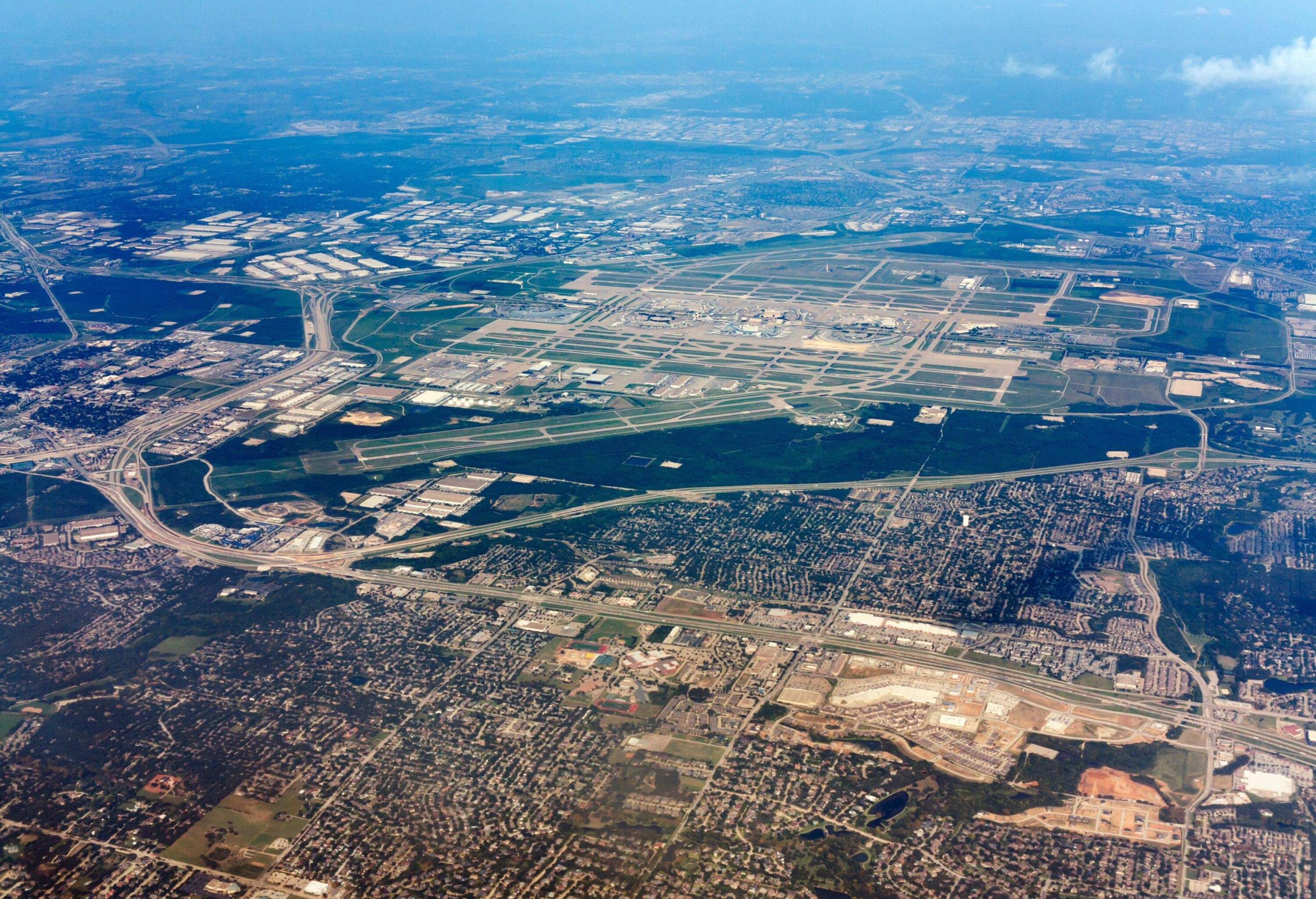
As a native Texan who grew up on the promise that everything is bigger in Texas, it is a bit disappointing to see Dallas/Fort Wort International Airport (DFW) is not in the first place as the largest airport in the world. As a consolation, when it opened in 1974, DFW was the largest airport in the world, but today it rounds out the top five with 27 square miles. It is so large, however, that it has its own zip code and city designation. It is also one of the busiest airports in the world shuffling tens of millions of passengers through five terminals and 168 gates each year.
What sets DFW apart from many of the largest airports in the world, and is a personal favorite of mine, is its abundant security entrances. The airport has multiple checkpoints positioned across each terminal to disperse the crowds meaning the wait period to go through security is next to nothing. It is a stark contrast when compared to Denver’s airport. Check out KAYAK’s guide on the best time to get to the airport for more tips.
While getting through airport security might take a jiffy, navigating between the terminals for a connecting flight might take some time. Skylink is the airport’s free light-rail train inside the security area that connects all five terminals. It runs every two minutes to help you make those tight connections.
All major airlines fly out of DFW, however, American Airlines is the top dog as the airport is American Airlines’ primary hub. DFW is also a huge airport for connecting flights.
Planning to park at the airport? DFW allows you to secure your parking spot even before your arrival. When you prepay for a parking spot, you not only ensure availability upon arrival, but also the airport discounts parking spots the earlier you book.
6. Atlanta Hartsfield-Jackson International Airport (ATL) – 7.34 miles
Atlanta Hartsfield-Jackson International Airport (ATL) is one of the biggest airports, with 7.34 miles, and also the busiest airport in the world. This should come as no surprise to anyone paying attention to travel news as Georgia’s capital city has earned this top ranking almost every year for the past quarter-of-a-century.
In fact, ATL made history as the first airport ever to welcome more than 100 million passengers in one year. The global travel data provider OAG uses the total airline capacity from both domestic and international flights to determine its busiest global airport. According to their data, Atlanta will have 62.2 million available seats. The Dubai International Airport (DXB) comes in at number two with 57 million available seats for the year.
The airport is home to two terminals, seven concourses, and 192 gates plus it’s just 10 miles south of downtown, making it an ideal starting point for exploring Atlanta. What really adds to the airport’s buzz is the fact it is a strategic hub for Delta Airlines. Famed comedian Leslie Jordan joked that a flight attendant once told him, “Honey, it doesn’t matter if you are going to heaven or hell. If you are on Delta, you are stopping through Atlanta.”
With an average of 2,700 arrivals and departures every day from 150 domestic locations and 78 international locations, the airport is a hub of activity and feels like it.
If you don’t already have it, get TSA PreCheck. It is $78 for a five-year membership and in busy airports like Atlanta it can save you precious time standing in a security line. There is always a debate among travellers about which is better: Global Entry or TSA PreCheck. For my money, TSA PreCheck is the way to go.
Largest airports in the world: bigger isn’t always better
As travelers, we understand that “bigger isn’t always better” particularly rings true for airports. Their immense size doesn’t always equate to better efficiency or convenience. However, sometimes it is fun to marvel at just how far they can get you to talk from one gate to another.
FAQs about the largest airports in the world
Hartsfield-Jackson Atlanta International Airport holds the title as the busiest airport in the world. Located in Atlanta, Georgia more than 107 million people passing through its terminals in a typical year.
With a rooftop pool, multiple rooms dedicated to gaming and napping facilities, the Singapore Changi Airport is considered one of the best airports to get stuck in. Other great world airports with plenty of food and activities include Dubai International Airport, Hong Kong International Airport, and Vancouver Airport.


